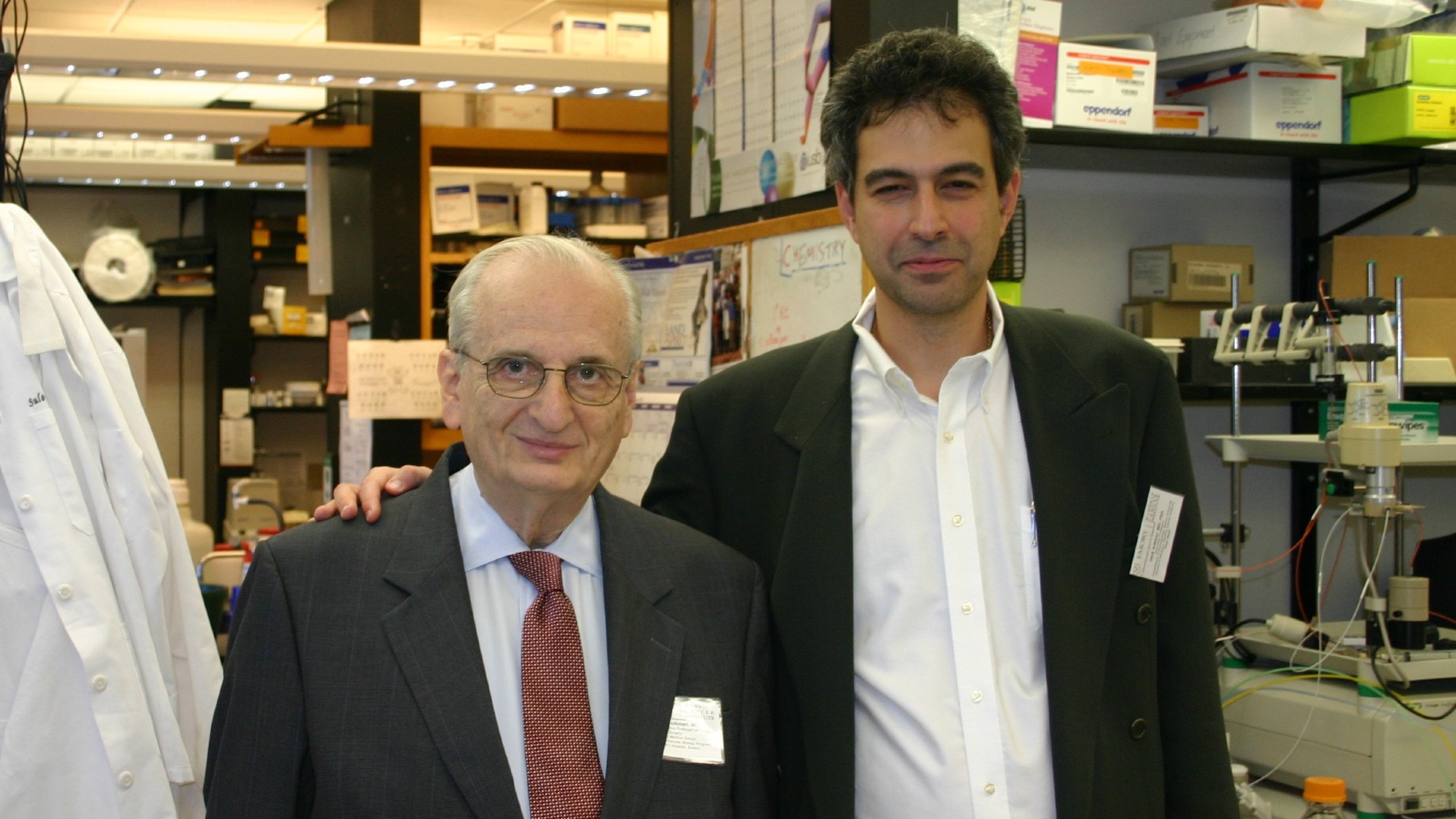Research Focus
The Arbiser lab focuses on solving clinical problems. This involves using a complete knowledge of what is already known to solve problems today, instead of waiting for a mythical silver bullet in the future - an approach he learned from renowned expert Dr. Judah Folkman (pictured with me).
Dr. Arbiser and his team also focus on developing novel small molecules that are first in class to address common skin, inflammation, and cancer needs.






